
Soul Edge is a fighting game developed by the Namco team Project Soul and published by Namco as the first installment in the Soulcalibur series of 3D fighting games. Introduced at the JAMMA trade show in November 1995, the full arcade game was released in early 1996, while later in December an upgraded and expanded version of the game was ported to the PlayStation. The PlayStation version was renamed Soul Blade in North America, Europe, and Australia.

Bomberman is a video game franchise originally developed by Hudson Soft and currently owned by Konami. The original game, also known as Bakudan Otoko (爆弾男), was released in Japan in July 1983 and has since spawned multiple sequels and spin-offs released on numerous platforms, as well as several anime and manga adaptations.

Marvel vs. Capcom is a series of crossover fighting games developed and published by Capcom, featuring characters from their own video game franchises and comic book series published by Marvel Comics. The series originated as coin-operated arcade games, though later releases would be specifically developed for home consoles, handhelds, and personal computers.
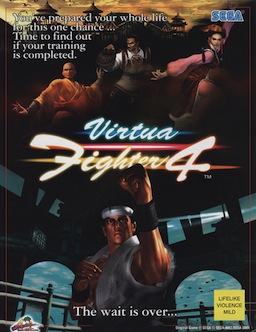
Virtua Fighter 4 is a fighting game by Sega. It is the fourth game in the Virtua Fighter series.

Sonic Battle is a 2003 fighting video game developed by Sonic Team for the Game Boy Advance. It is the second fighting game in the Sonic the Hedgehog series, the first game being Sonic the Fighters. It was released in Japan in December 2003 and in North America and Europe in early 2004. The game received a lukewarm response from critics.
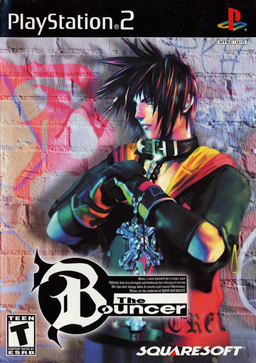
The Bouncer is a 2000 beat 'em up video game for the PlayStation 2 co-developed by Squaresoft and DreamFactory. It was published in Japan by Squaresoft in December 2000, in North America by Square Electronic Arts in March 2001, and in Europe by Sony Computer Entertainment Europe in June 2001. The game was produced by Shinji Hashimoto, co-directed by Takashi Tokita and Seiichi Ishii, and features character designs by Tetsuya Nomura, and music by Noriko Matsueda and Takahito Eguchi.

Bomberman Generation is a 2002 video game released for the GameCube. It was followed up by Bomberman Jetters.
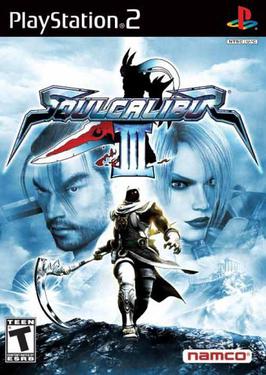
Soulcalibur III is a fighting video game produced by Namco as a sequel to Soulcalibur II and the fourth installment in the Soulcalibur series. It was originally released for the PlayStation 2 in 2005. An improved arcade version, Soulcalibur III: Arcade Edition, was released in 2006. It was the last Soulcalibur game to receive an arcade version, as IV onwards did not have an arcade release, and was also the last to be released by Namco as an independent company, as it would merge with Bandai's video game division to form Bandai Namco Entertainment in 2006. It is the second in the Soulcalibur series’ 1590 A.D. trilogy games, between II and IV.

Dead or Alive 2 is a fighting game developed by Team Ninja and published by Tecmo. It debuted in Arcades in 1999 and was later ported for the Dreamcast and the PlayStation 2 in 2000. It is the second main entry in the Dead or Alive fighting series. Several enhanced editions of the game were released, including the updates Dead or Alive 2 Millennium and Dead or Alive 2 Hardcore.

Bomberman Jetters is an action game for the Game Boy Advance, GameCube and PlayStation 2, and part of Hudson Soft's Bomberman series. The game builds on the gameplay style established in the previous Bomberman series entry, 2002's Bomberman Generation, and features characters and settings from the 2002 anime series Bomberman Jetters. The GameCube version utilizes cel-shaded graphics similar to those of Bomberman Generation, while the PlayStation 2 version does not.

Teenage Mutant Ninja Turtles: Tournament Fighters, or Teenage Mutant Hero Turtles: Tournament Fighters in Europe, is the title of three different fighting games based on the Teenage Mutant Ninja Turtles, produced by Konami for the Nintendo Entertainment System, Sega Genesis, and Super NES and released during a period between 1993 and 1994. Konami produced a different fighting game based on the franchise each featuring a differing cast of characters for the platforms. All three versions of the game were re-released as part of Teenage Mutant Ninja Turtles: The Cowabunga Collection in 2022. with online play using rollback netcode for the SNES version of the game.

Bomberman: Act Zero is a maze video game developed by Hudson Soft for the Xbox 360 in 2006 and published by Hudson Soft in Japan and Konami worldwide. It is noteworthy for its departure from standard titles in the Bomberman series; it features more realistic graphics and a dark, dystopian future setting. The game was panned by critics and fans, and is considered one of the worst video games ever made.
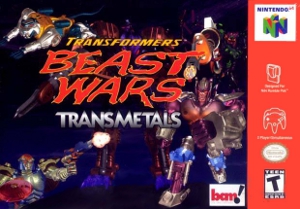
Transformers: Beast Wars Transmetals is a 1999 3D fighting game based on the Transformers: Beast Wars cartoon series and toy-line for the Nintendo 64 and PlayStation. Each version features different mechanics and playable characters.

Soulcalibur IV is a 2008 fighting video game developed by Project Soul and published by Namco Bandai Games for the PlayStation 3 and Xbox 360. It is the fifth installment in the Soulcalibur series, featuring greatly improved visuals over its predecessor and three playable guest characters from the Star Wars franchise. It is also the first Soulcalibur game to not receive an arcade version, and the last game in the Soul series’ 1590 A.D. trilogy, following Soulcalibur II and Soulcalibur III.
Naruto: Clash of Ninja, released in Japan as Naruto: Gekitō Ninja Taisen!, is a series of 3D cel-shaded fighting games based on the manga and anime series Naruto by Masashi Kishimoto. They are developed by Eighting and published by D3 Publisher and Tomy. The series began with four GameCube games, with the first two available internationally and the last two released exclusively in Japan, before splitting into two parallel Wii-exclusive follow-up series: the Gekitō Ninja Taisen EX tetralogy released exclusively in Japan and its international counterpart, the Clash of Ninja: Revolution trilogy. The two Wii series share the same gameplay mechanics, but differ with respect to content and characters, with the international Revolution series being based on a localized version of the Naruto anime series. The first half of the original series and the entire Revolution trilogy are available in North America and Europe, the first two Revolution games are available in Australasia and all games in the series except the Revolution trilogy are available in Japan.
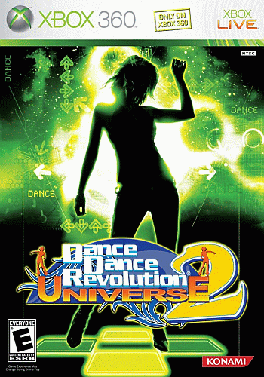
Dance Dance Revolution Universe 2, sometimes abbreviated as Universe 2, is a music video game for the North American Xbox 360. Published by Konami and developed by Hudson Soft on December 4, 2007, Universe 2 is a sequel to Dance Dance Revolution Universe released earlier the same year. Universe 2 features a large soundtrack with songs ranging from the 1970s to today, new modes of gameplay designed for newcomers including Freestyle Mode which allows players to dance without needing to step on any arrows, Quest Mode where players build a dancing character and travel from location to location in a virtual world facing off against other dancers, and downloadable content through the Xbox Live service. The game was released in Europe with a different set of songs as Dancing Stage Universe 2.

Super Smash Bros. Brawl is a 2008 crossover fighting game developed by Sora Ltd. and Game Arts and published by Nintendo for the Wii. The third installment in the Super Smash Bros. series, it was announced at a pre-E3 2005 press conference by Nintendo president Satoru Iwata. Masahiro Sakurai, director of the previous two games in the series, assumed the role of director at Iwata's request. Game development began in October 2005 with a creative team that included members from several Nintendo and third-party development teams. After delays due to development problems, the game was released worldwide in 2008.
Platform fighter is a video game subgenre of fighting games that cover games that emphasize fighting on stages with free 2D movement, similar to a platform game.

Yu-Gi-Oh! The Eternal Duelist Soul is a card battle video game based on the Yu-Gi-Oh! franchise. It was developed and published by Konami and released on July 5, 2001 in Japan, October 16, 2002 in the United States for Game Boy Advance. It features a single-player campaign against opponents from the Yu-Gi-Oh! anime as well as a multiplayer head-to-head mode.

















